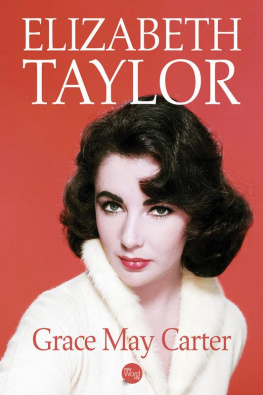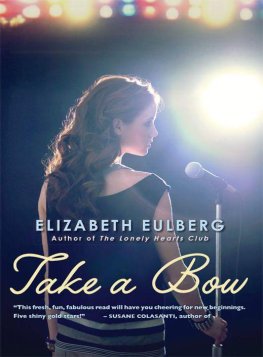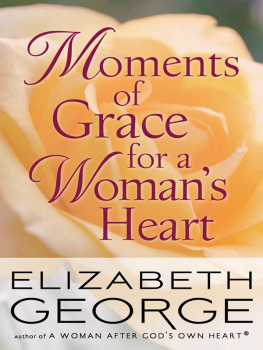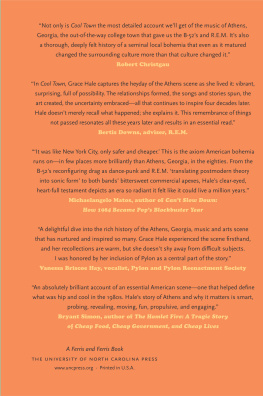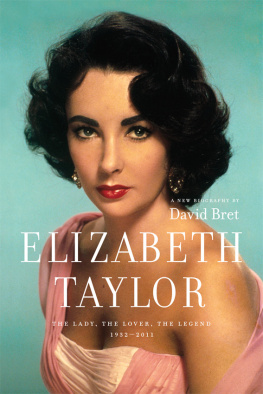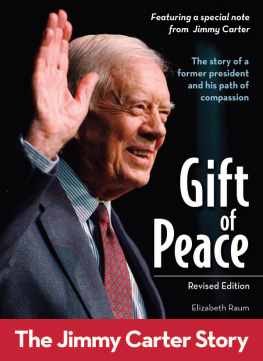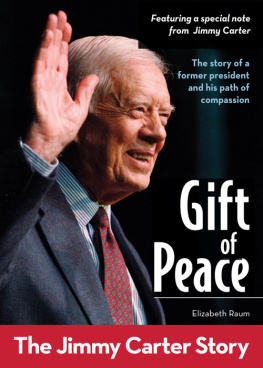Grace May Carter - Elizabeth Taylor
Here you can read online Grace May Carter - Elizabeth Taylor full text of the book (entire story) in english for free. Download pdf and epub, get meaning, cover and reviews about this ebook. year: 2018, publisher: New Word City, Inc., genre: Detective and thriller. Description of the work, (preface) as well as reviews are available. Best literature library LitArk.com created for fans of good reading and offers a wide selection of genres:
Romance novel
Science fiction
Adventure
Detective
Science
History
Home and family
Prose
Art
Politics
Computer
Non-fiction
Religion
Business
Children
Humor
Choose a favorite category and find really read worthwhile books. Enjoy immersion in the world of imagination, feel the emotions of the characters or learn something new for yourself, make an fascinating discovery.
- Book:Elizabeth Taylor
- Author:
- Publisher:New Word City, Inc.
- Genre:
- Year:2018
- Rating:4 / 5
- Favourites:Add to favourites
- Your mark:
- 80
- 1
- 2
- 3
- 4
- 5
Elizabeth Taylor: summary, description and annotation
We offer to read an annotation, description, summary or preface (depends on what the author of the book "Elizabeth Taylor" wrote himself). If you haven't found the necessary information about the book — write in the comments, we will try to find it.
Elizabeth Taylor — read online for free the complete book (whole text) full work
Below is the text of the book, divided by pages. System saving the place of the last page read, allows you to conveniently read the book "Elizabeth Taylor" online for free, without having to search again every time where you left off. Put a bookmark, and you can go to the page where you finished reading at any time.
Font size:
Interval:
Bookmark:
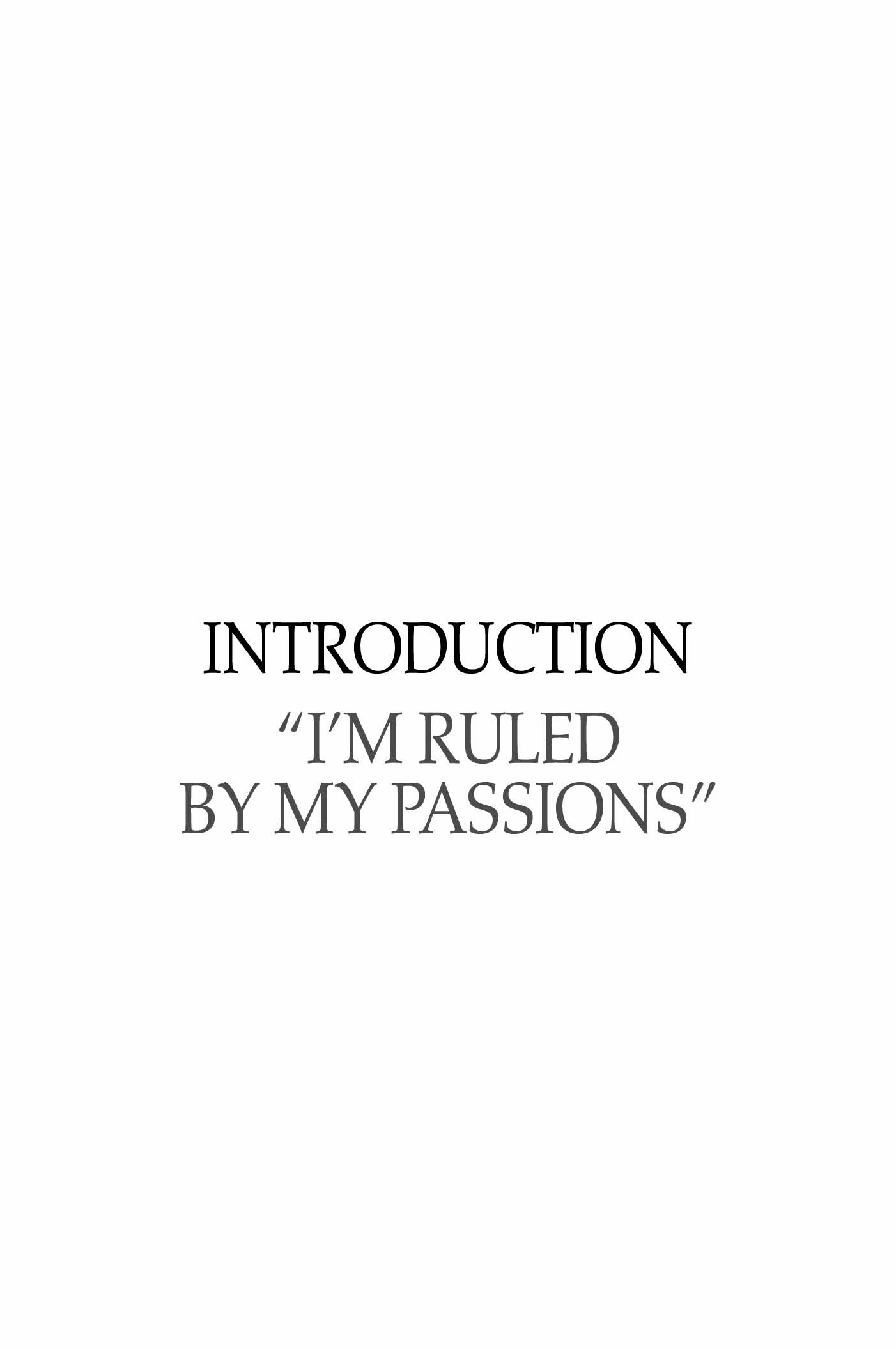
In the 1960s, Elizabeth Taylor was the worlds biggest movie star. Her fame grew unabated until the public became intimately familiar with the details of her many epic scandals eight stormy marriages, a jewel-encrusted lifestyle, her struggles with weight and sundry addictions. As a result, her considerable accomplishments as an actress seem to fade in comparison, and today she is remembered as one of the first modern-day celebrities someone who was famous mostly for being famous.
But the real Elizabeth Taylor was a far more complex and fascinating woman than the caricature of excess created by the tabloid press. In a nearly sixty-year film career that began in 1942 at age nine, she created a stream of iconic film characters, from Maggie in Cat on a Hot Tin Roof to Martha in Whos Afraid of Virginia Woolf? Later in life, she created and personally advertised a successful line of perfumes, raised millions for charity, and became a tireless HIV/AIDS activist.
In her heyday, Elizabeth only the media called her Liz was often called the most beautiful woman in the world, her sensual good looks accented by penetrating violet-blue eyes and double rows of eyelashes caused by a rare genetic mutation. Her mystique defied all attempts to define it. Taylor may not have been a sex symbol at all, if by that is meant a figure upon whom the desires of an age are projected, wrote JoAnn Wypijewski in The Nation after her death in 2011. She seemed too frank and restless pursuing her own desires to be captured in that way.
And while she would not have defined herself as a feminist, Elizabeths portrayals of fiercely independent female characters in popular 1950s films helped pave the way for the womens movement of the sixties and seventies. These included Texas ranch wife Leslie Lynnton in Giant, who confronts sexism and racism in the American West, and call girl Gloria Wandrous in Butterfield 8, who aggressively takes charge of her own sexuality.
Social critic Camille Paglia called Taylor pre-feminist and argued that her work expressed womans ancient and eternal control of the sexual realm. Added M.G. Lord in her book, The Accidental Feminist, The characters she played were women to be reckoned with.
Indeed. During her lengthy career, which spanned seven decades, Elizabeth both embodied the glamour of Hollywoods glory days of the 1940s and 1950s and eclipsed it, thriving long after the old studio system faded away. From her breakout 1944 film National Velvet at age twelve to Tennessee Williamss Suddenly Last Summer (1959) and beyond, Elizabeths rich body of work continues to enthrall movie-lovers. She was nominated for five Oscars and won two (for Virginia Woolf and Butterfield 8) and was honored by the American Film Institute in 1993 as the seventh greatest female film legend of all time.
To say that Elizabeth was restless in her personal life would be a comic understatement. Ive always admitted that Im ruled by my passions, she once said, trying to explain why she married so often she wed four of her seven husbands in the 1950s alone.
But her failed marriages involved much more than private pain and suffering. They were prime-time soap operas, played out in public for all the world to see. In 1959, she was vilified by fans for stealing singer Eddie Fischer from his wife Debbie Reynolds, and her two marriages to the explosive Welsh actor Richard Burton in the sixties and seventies had more plot twists than all her movies combined. Later, she wed Senator John Warner of Virginia, and finally, in 1991, a construction worker named Larry Fortensky, whom she had met in rehab at the Betty Ford Center.
Even her friendships like her curious relationship with pop singer Michael Jackson that started in the eighties - provided endless tabloid fodder, triggering unfounded rumors that she and Jackson were lovers (they were actually more like Peter Pan and Wendy).
Through it all, Elizabeth tried to salvage whatever bits of privacy she could, penning a bland and unrevealing memoir and trying desperately to keep her four children out of the limelight (she had two sons by her second husband, the British actor Michael Wilding, a daughter with Todd, and an adopted daughter with Burton).
When she failed to keep her personal life out of the headlines, Elizabeth decided to turn the tables on the media by exploiting her fame - for her own benefit and the benefit of those less fortunate. As her acting career tapered off in the 1980s, she became the first celebrity to successfully sell her own line of fragrances and wrote two more books: the diet guide Elizabeth Takes Off (1988) and My Love Affair with Jewelry (2002). After skillfully using her celebrity status to help fight the AIDs epidemic, in 1987, she was made a Knight of the French Legion of Honour, and in 2001, received the U.S. Presidential Citizens Medal from President Bill Clinton.
None of her fame and fortune, however, could shield Elizabeth from a lifetime of recurring and often painful health issues. She was born with scoliosis, curvature of the spine, which required an operation in her twenties, and back problems plagued her throughout her life. She nearly died of pneumonia twice, had a benign brain tumor removed, was a heavy smoker, and became addicted to alcohol and prescription medications (she was the first major celebrity to admit to entering rehab). Diagnosed with congestive heart failure in 2004, she soldiered on until she died of the disease in 2011 at the age of seventy-nine.
Elizabeth Taylors life was turbulent even by Hollywood standards, brimming with heartbreak and redemption. It was a life destined for superstardom from the moment she refused to leave the stage after her first dance performance at the age of three: Elizabeth, you must come off! her teacher hissed.
From that time on, she rarely did.
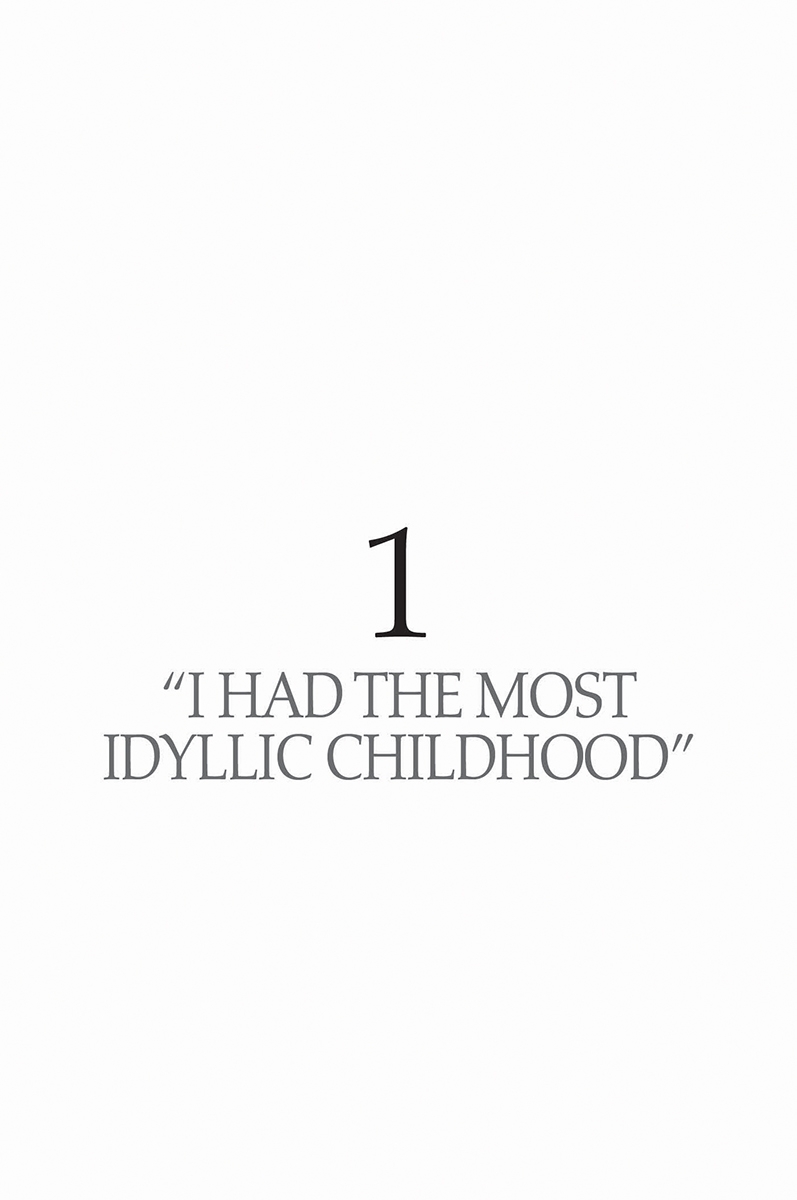
Elizabeth Rosemond Taylor was born in a suburb of London on February 27, 1932, to affluent American parents. Later, she looked back at those first few years of life as an Elysian dream: I had the most idyllic childhood in England.
The truth was far more complex.
Her parents, Sara and Francis Taylor, had complicated personal and marital problems that inevitably affected young Elizabeth and her older brother Howard far more than the children could possibly fathom at the time.
Elizabeths mother, Sara Viola Warmbrodt, was born on August 21, 1895, in the mill town of Arkansas City, Kansas. A petite brunette with an engaging manner, her friends described her as highly ambitious, smart, aggressive as hell, even tough. When Sara was a girl, her father moved the family to Cherokee, Oklahoma, where he took a job managing a laundry. Thats where she met her future husband, Francis Taylor, whose father ran the towns general store.
Saras father objected to the budding friendship between his daughter and the boy, because Francis, though clearly intelligent, was a year younger than Sara. But the issue became moot when Francis, at nineteen, moved away, brought to New York by his rich uncle, S. Howard Young, to work at Youngs profitable art dealership. The childless Young planned to groom Francis to take over the management of his other gallery in London.
Meanwhile, Sara headed west to Los Angeles to pursue an acting career. Her mother, Elizabeth Warmbrodt, who played both violin and piano, had worked hard to cultivate her daughters creative instincts and was thrilled when Sara made her acting debut under the stage name Sara Sothern. In her first performance with a stock company in Southern California, Sara played a poor handicapped girl who is miraculously healed in the last act of
Font size:
Interval:
Bookmark:
Similar books «Elizabeth Taylor»
Look at similar books to Elizabeth Taylor. We have selected literature similar in name and meaning in the hope of providing readers with more options to find new, interesting, not yet read works.
Discussion, reviews of the book Elizabeth Taylor and just readers' own opinions. Leave your comments, write what you think about the work, its meaning or the main characters. Specify what exactly you liked and what you didn't like, and why you think so.

